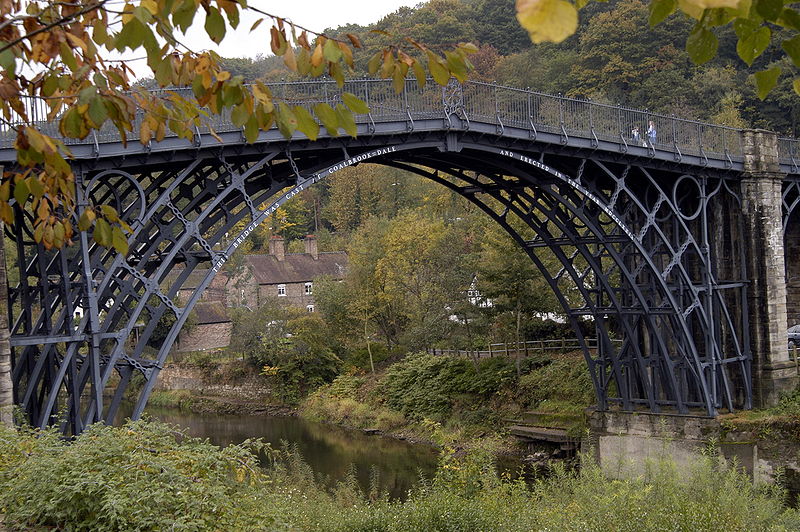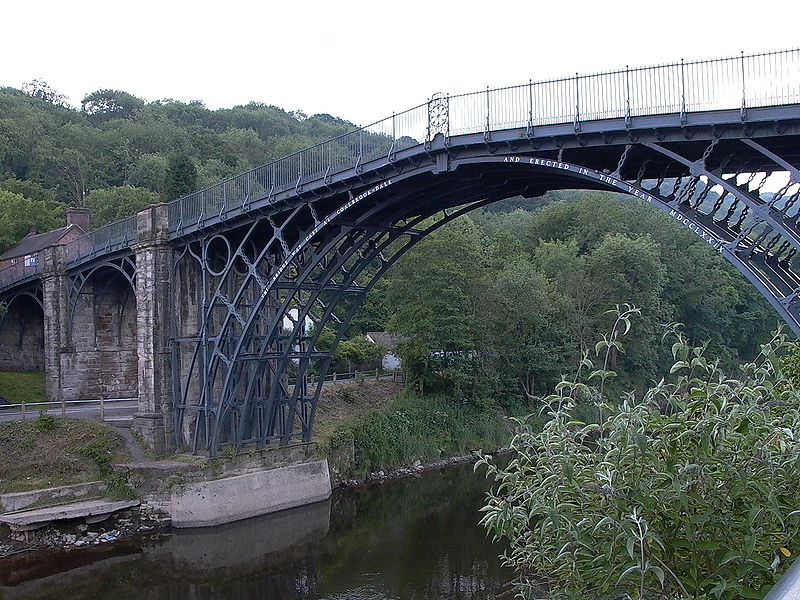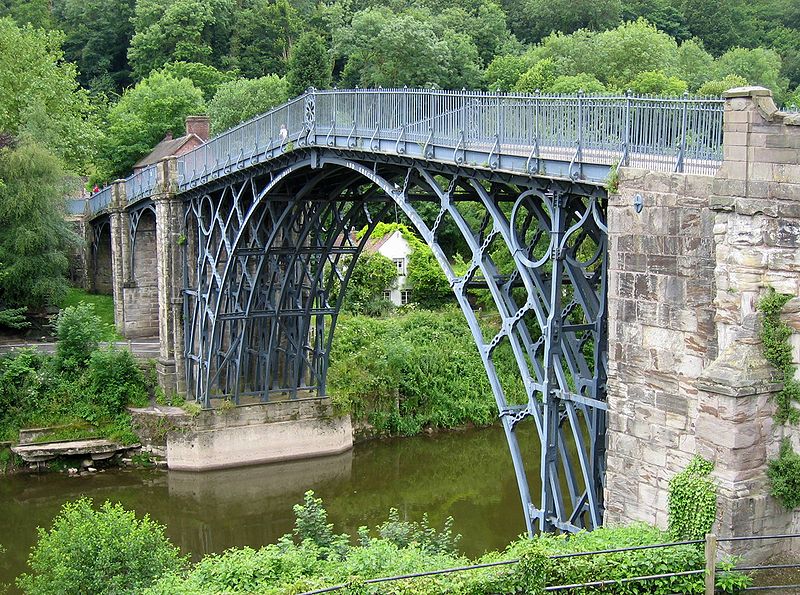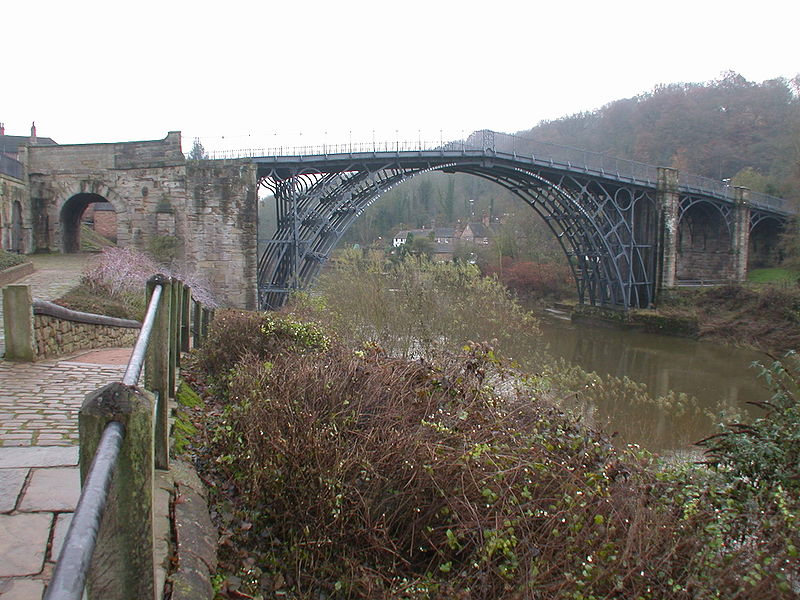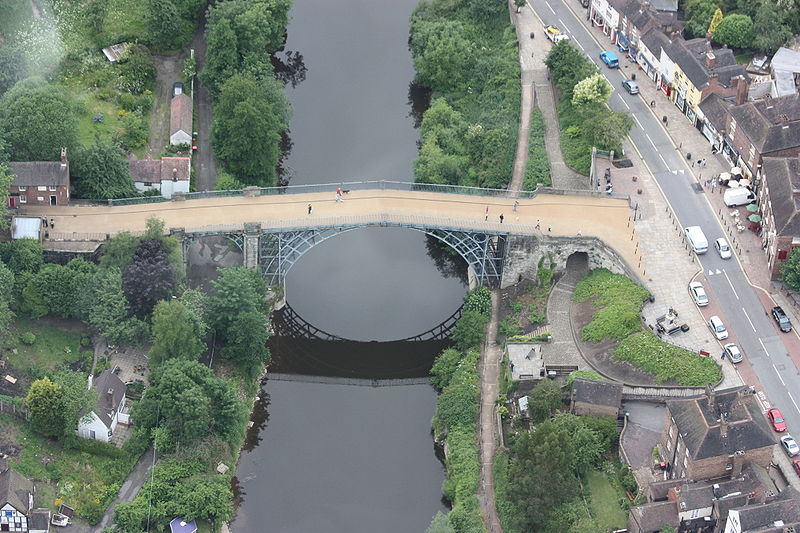| |||||||
Europe
North AmericaSouth AmericaAsiaAustralia and OceaniaAfrica |
Смотрите также: The Iron Bridge The Iron Bridge crosses the River Severn at the Ironbridge Gorge, by the village of Ironbridge, in Shropshire, England.
Iron Bridge Carries Pedestrian traffic Crosses River Severn Locale Ironbridge Gorge near Coalbrookdale Design Cast iron arch bridge Total length 60 metres (200 ft) Longest span 30.5 metres (100 ft) Beginning date of construction 1775 Completion date 1779 Opening date 1781-01-01
It was the first arch bridge in the world to be made out of cast iron, a material which was previously far too expensive to use for large structures. However, a new blast furnace nearby lowered the cost and so encouraged local engineers and architects to solve a long-standing problem of a crossing over the river.
Construction In the early eighteenth century the only way to cross the Severn Gorge was by ferry. However, the industries that were growing in the area of Coalbrookdale and Broseley needed a more reliable crossing. In 1773, Thomas Farnolls Pritchard wrote to a local ironmaster, John Wilkinson of Broseley, to suggest building a bridge out of cast iron. By 1775, Pritchard had finalised the plans, and Abraham Darby III, an ironmaster working at Coalbrookdale in the gorge, was commissioned to cast and build the bridge.
Shares were issued to raise the £3,200 required, and Darby agreed to fund any overspend. Although it had been predicted that 300 tons of iron would be needed (costing £7 a ton), in the end 379 tons were used, costing Darby and his company nearly £3,000. There would be many other costs to bear (masonry abutments, assembly etc), so that the project was far more expensive than first envisaged. Darby bore most of the cost over-run, and was in debt for the rest of his short life. Being the first of its kind, the construction had no precedent; the method chosen to create the structure was therefore based on carpentry. Each member of the frame was cast separately, and fastenings followed those used in woodworking, such as the mortise and tenon and blind dovetail joints. Bolts were used to fasten the half-ribs together at the crown of the arch. Very large parts were needed to create a structure to span 100 feet rising to 60 feet above the river. The largest parts were the half-ribs, each about 70 ft long and weighing 5.25 tons. The bridge comprises more than 800 castings of 12 basic types.
The bridge was raised in the summer of 1779, and it was opened on New Year's Day 1781. In 2001, the BBC screened a documentary in which a half-sized model of the bridge was built to test recent research over the construction. Instead of large timber towers, a pair of uprights with a crosspiece was used to erect each of the ribs in sequence. The abutments were built afterwards. Comments: 0 |
|
|||||







































